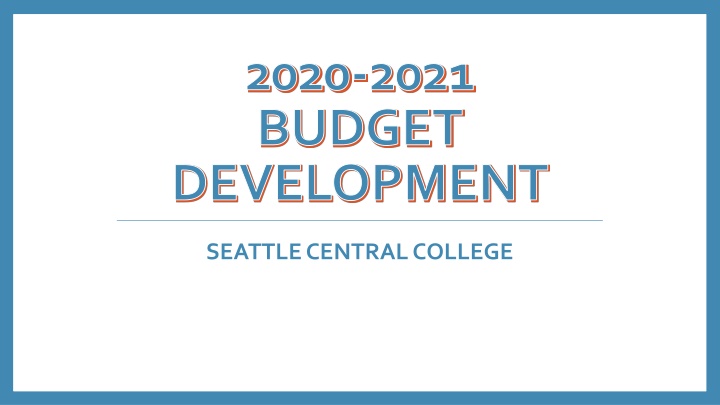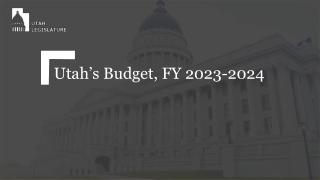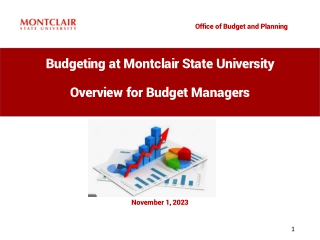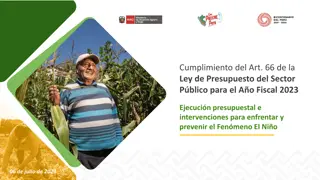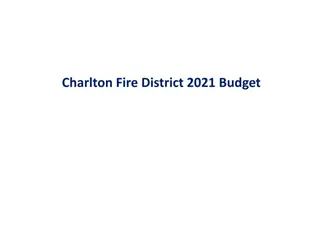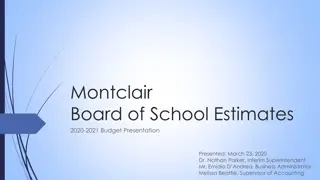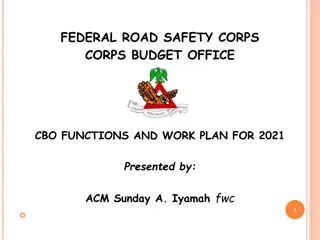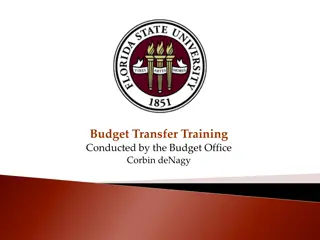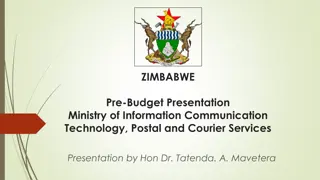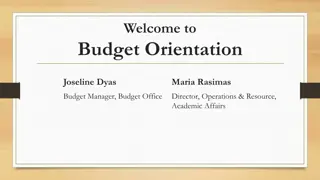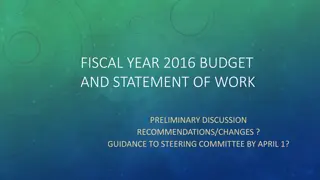2020-2021 BUDGET DEVELOPMENT
This content provides detailed insights into the budget development, operating revenue sources, and allocation at Seattle Central College for the period 2020-2021. It covers funding sources, operating budget utilization, local funds expenditure, and trends in different fund types over historical years.
Download Presentation

Please find below an Image/Link to download the presentation.
The content on the website is provided AS IS for your information and personal use only. It may not be sold, licensed, or shared on other websites without obtaining consent from the author.If you encounter any issues during the download, it is possible that the publisher has removed the file from their server.
You are allowed to download the files provided on this website for personal or commercial use, subject to the condition that they are used lawfully. All files are the property of their respective owners.
The content on the website is provided AS IS for your information and personal use only. It may not be sold, licensed, or shared on other websites without obtaining consent from the author.
E N D
Presentation Transcript
2020-2021 BUDGET DEVELOPMENT SEATTLE CENTRAL COLLEGE
The Big Picture Operating Budget Self Support & Enterprise Foundation Funded Grant Funded Capital Budget National Science Foundation Instruction International Programs Minor & Major Projects Professional Development Student Services Carl D. Perkins Repair & Program Improvement Parking Administrative Services WorkFirst Scholarships Auxiliary Services Food, Copy, Rent M&O Funding Institutional Management Department of Education
What are the sources of Operating Revenue ? Last academic year we had a 65.9M operating budget from three main sources. Funding Sources, 2018-19 State Appropriation $22,059,796 34% Operating Fees (tuition) $31,706,601 48% $12,163,549 18% Local Funds (fees, grants/contracts, S&A, international programs, Running Start, auxiliary services)
What is the operating budget used for? Operating Budget by College Unit, 2018-2019 34M of the 65M operating budget comes from either state allocation or tuition. $1,872,333 6% $3,695,763 11% Instruction Student Services $4,268,652 13% Institutional Management $22,446,744 70% Plant Operations and Maintenance
What are these local funds? Expenditure from Local Funds, 2018-19 31M of the 65M operating budget almost as much!- comes from local funds. $33,524 0% $6,867,306 20% Grants/Contracts $8,986,027 26% International/SCIE $1,701,493 5% Other Self-Support S&A Funding $4,852,489 14% Auxiliary Services $11,802,324 35% Agency
Funding Sources Comparison 100% Local Funds (fees, grants/contracts, S&A, Running Start, auxiliary services) 90% 20% 30% 80% 70% 25% We are starting to rely more on local funds than state operating funds for the entire operating budget over time. International/SCIE 18% 60% 50% 19% 18% 40% Operating Fees (tuition) 30% 20% 36% 33% 10% State Appropriation 0% 2015-16 2018-19
Historic Trends in Types of Funds $70,000,000 $60,000,000 145/146 (Grants/Contracts, including Running Start) $50,000,000 International Programs $40,000,000 148 (Self-Support) $30,000,000 149 (Operating/Tuition) $20,000,000 101 (State Funds) $10,000,000 $0 FY1516 FY1617 FY1718 FY1819 FY1920
Background Factors facing the College Budget Declining Enrollment Tuition Shortfall Decreasing International Student Enrollment Facility Conditions & Limitations Budget & Fiscal Constraints New Allocation Models at State and at District level Impacts from Past Budget Cuts
Background Factors: Enrollment Seattle Central Enrollment Trends 7000 6149 6141 6141 6099 5701 6000 5503 5461 6101 5241 5049 5739 4989 4860 4795 5000 4000 3000 1864 1783 1772 1736 1733 2000 1591 1282 1000 0 2012-13 2013-14 2014-15 2015-16 2016-17 2017-18 2018-19 State Target State Enrollment Contract
Background Factors: S/F Ratio S/F Ratio 22.5 22.3 22.2 22.0 21.5 21.5 21.2 21.0 21.0 20.7 20.7 20.5 20.0 19.5 2012-13 2013-14 2014-15 2015-16 Academic Year 2016-17 2017-18 2018-19 Source: SBCTC S/F Ratio Dashboard
2018-2019 Operating Budget Recap (no local funds) 18-19 Budget 18-19 Actual % of Budget 19-20 Budget Instruction $23,309,582 $22,446,744 96% $20,197,144 Student Services $4,994,247 $4,268,652 85% $5,954,186 Institutional Management $2,406,722 $1,872,333 78% $4,290,311 Plant Operations & Maintenance $3,960,102 $3,695,763 93% $4,692,854 Total Expenditures $34,670,653 $32,283,492 93% $35,134,495
2019-2020 Reviewing this Year s Budget
2019 2020 Budget Recap In 2019-2020, we planned a 3% budget reduction. Resource Allocation Committee of College Council provided principles to the Executive Team to employ when cutting the budget. Avoid across the board reductions. Assess reductions on case-by-case basis. Promote and fund educational initiatives that increase student recruitment, retention and completion, especially for students who have been underserved. Support the guided pathways and safety/security goals of the college operational plan. Identify opportunities to standardize and reduce duplication of effort across the college. Seek alternatives when considering a reduction-in-force. Pursue new revenue streams in line with college operational plan. We continue to use diminishing reserves to offset having less tuition and allocation than we have budgeted to spend.
2019 2020 Spending Cash We started spending more cash on hand in FY 1718, around the time that international enrollment started falling precipitously. By FY 1819, we were carrying forward about 2M less at the end of the year than we usually did. 3M of the operating budget that year was paid for by spending cash on hand (reserves). In FY 1920, we had to plan for 3M less going forward in the budget and in future years. The Executive Team decided it would be too difficult to cut 3M so quickly all at once, so we took a 1.5M budget reduction and assumed we would keep spending the other 1.5M out of cash reserves. Into FY 2021, we are heading toward a 6.4M imbalance due to declining revenues from decreasing international student enrollment, flat or declining state enrollment, and increased cost of doing business.
2019 2020 Budget Recap Other uses of reserves during the 1920 budget year: Welcome Kiosk Renovations- TLC and Opticianry One Card Project MAC Waterproofing Housing Feasibility Study Major Institutional Master Plan $110,000 $250,000 $250,000 $175,000 $100,000 $750,000 The MIMP update will cost 1.5M over two years. This is not a comprehensive list of reserve spending for 1920. Over 2M in reserves will be spent this budget year.
Historical Trend for Cash Reserves Academic Year Cash Reserves Change Y2Y 2015-2016 $14,805,894 2016-2017 $15,210,453 +404K 2017-2018 $13,474,934 -1.7M 2018-2019 $10,892822 -2.5M 2019-2020 $7,308,496 -3.5M 2020-2021 ??? > or = -2M
2019 2020 Budget Recap Some good news: Increased Revenues Year Up partnership 160 FTE BAS program enrollment growth Seattle Promise enrollment growth 1.2% net tuition increase Opportunities for Efficiency Increasing average number of students per class Divesting old buildings to generate income
2020-2021 Planning Next Year s Budget
2020-2021 Budget Assumptions Enrollment Next Year State enrollment is projected to be flat overall. Running start enrollment will continue to increase, as much as +5%. + 490K International student enrollment will continue to decrease, as much as -15%. -1.7M BAS student enrollment will continue to increase, as much as +5%. +45K Seattle Promise enrollment will increase, likely more than double, from 100 to as many as 300 students. + 621K Year Up will increase 80 FTE next year +250K State funded tuition will increase 2.4% +250K With all of these changes, we still don t really come out with any more money against the loss of international student enrollment.
2020-2021 Budget Assumptions Other Potential Funding Changes Employees will receive a 3% COLA in July 2020. It is unclear if it will be funded at 100% by the state or if the college will have to pay for a portion out of local funds. Colleges will receive a portion of $30M one-time funding for guided pathways. It will be limited in the ways we can spend it. Colleges will receive a portion of $20M for high-demand faculty salaries. It will be limited in the ways we can spend it.
2020-2021 Budget Development Against the imbalance in the FY 1920 budget going into FY2021, we will earn back some funds from reimbursement for purchasing apprenticeship FTE at South 2 years ago. from transfers from North and South for the district nursing program. from changes how the district office is funded by all three colleges. We will still need to identify at least 3.5M in budget cuts to match the expenses on the operating budget more closely to the funds that are available for us to spend. This may take more than one year to complete. For 2020-2021, the Executive Team is recommending the college take another 3% reduction at a minimum to next year s budget while we work identify longer-term strategies for the rest of the 3.5M reduction. Until we are able to complete this budget reduction, we will have to keep spending dwindling cash reserves to make up any differences between revenues and expenses.
2020-2021 Budget Priorities District-wide Strategic Plan Implement structured academic and career pathways Improve student retention and completion Implement city-wide Seattle Promise Practice strategic enrollment management Practice coordinated recruitment and marketing Expand academic offerings Develop and implement a diversity action plan Build high-quality partnerships
2020-2021 Budget Priorities College Operational Goals Seattle Pathways Safety and Security Increased retention and completion of students Onboarding, Orientation and Advising Alternate and flexible modes of instruction and student services
2020-2021 Budget Priorities Resource Allocation Committee has again provided Executive Team with principles to use when reducing the budget this year. Support the guided pathways goal in the operational plan. Support the safety and security goal in the operational plan. Support the goal to provide alternative and flexible modes of instruction and student services in the operational plan. Promote and fund educational initiatives that increase recruitment, retention, and completion of all students, especially those who have been underserved. Avoid across-the-board reductions. Assess reductions on a case-by-case basis. Seek alternatives when consideration a reduction-in-force. Seek opportunities to increase efficiency and reduce duplication of effort. Pursue new revenue streams in line with the college s operational plan.
2020-2021 Budget Timeline January Budget kickoff meetings Fee request process April Campus-wide budget presentations May Budgets presented to Board for first reading. February Departments build budgets July March Business offices analyze and enter budget information. Board reviews fee requests for first reading Colleges make final adjustments or balances to 2020-2021 budget.
